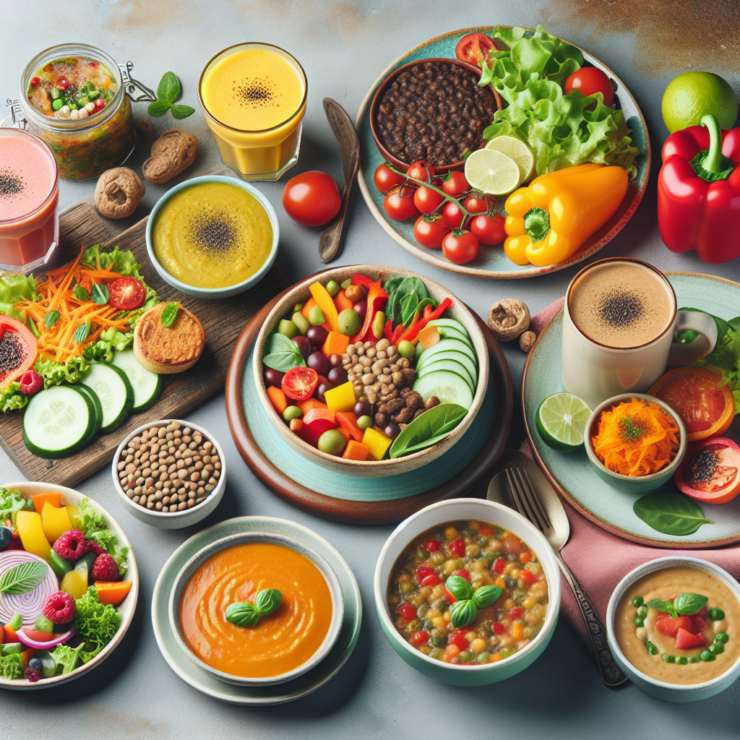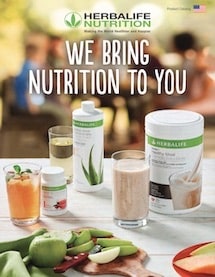Introduction to Gluten-Free Vegan Eating
The concept of gluten-free vegan eating combines two dietary preferences that are often chosen for health, ethical, or environmental reasons. This section will delve into what it means to follow a gluten-free vegan diet and the advantages of incorporating such meals into one’s lifestyle.
What Does Gluten-Free Vegan Mean?
A gluten-free vegan diet excludes all animal products, including dairy, eggs, and honey, as well as any foods containing gluten—a protein found in wheat, barley, and rye. Individuals who follow this diet avoid meat, fish, poultry, and all other animal-derived substances, while also ensuring that their plant-based choices are free of gluten. This approach to eating can be beneficial for those with celiac disease, gluten sensitivity, or for those who choose to eliminate gluten for other health reasons.
Benefits of Gluten-Free Vegan Meals
Choosing to eat gluten-free vegan meals comes with a variety of benefits, both personal and for the planet. Here are some of the key advantages:
-
Health Benefits: Gluten-free vegan recipes often incorporate a diverse range of fruits, vegetables, legumes, and gluten-free grains, contributing to a well-rounded intake of vitamins, minerals, and antioxidants. This can lead to improved digestion, reduced inflammation, and a lower risk of chronic diseases.
-
Weight Management: Plant-based diets are typically lower in calories and higher in fiber, which can help with satiety and support weight management efforts.
-
Environmental Impact: A plant-based diet requires fewer resources such as water and land, and produces fewer greenhouse gas emissions compared to diets that include animal products.
-
Ethical Considerations: Veganism supports animal welfare by avoiding products derived from animals.
-
Allergy Accommodation: For those with gluten allergies or sensitivities, gluten-free vegan recipes provide safe meal options without the risk of cross-contamination.
By embracing gluten-free vegan recipes, individuals can enjoy a variety of flavorful, nutritious meals while also contributing to a more sustainable and compassionate world. Whether one is looking for quick breakfast options, light lunches, or satisfying dinners, gluten-free vegan meals can cater to a range of dietary needs and preferences.
The Intersection of Sustainability and Plant-Based Diets
Sustainability and plant-based diets are closely linked. Individuals who opt for plant-based eating patterns not only support their health but also contribute to the well-being of the planet.
Environmental Benefits of Plant-Based Eating
Plant-based diets are known to have a lower environmental footprint. This is due to several factors, including reduced greenhouse gas emissions, lower water usage, and less land required for cultivation compared to diets that include meat and dairy products.
| Environmental Aspect | Plant-Based Diet Impact | Meat-Based Diet Impact |
|---|---|---|
| Greenhouse Gas Emissions | Significantly Lower | Higher |
| Water Usage | Less Water Intensive | More Water Intensive |
| Land Usage | More Efficient | Less Efficient |
By choosing plant-based meals, individuals directly contribute to the reduction of environmental stressors. The cultivation of plants typically requires fewer resources and leads to less habitat destruction. Additionally, plant-based diets can help decrease pollution and conserve biodiversity.
Gluten-Free Grains and Sustainability
Gluten-free grains such as quinoa, buckwheat, and millet are not just essential for those following a gluten-free diet; they are also beneficial for environmental sustainability. These grains often require less water and can grow in harsher climates where other crops might not thrive.
| Gluten-Free Grain | Water Requirement | Suitability for Harsh Climates |
|---|---|---|
| Quinoa | Moderate | High |
| Buckwheat | Low | High |
| Millet | Low | High |
Moreover, by diversifying the crops that are cultivated, soil health is improved, and the risk of pests and diseases is reduced, minimizing the need for harmful pesticides. Gluten-free grains can also be a part of crop rotation systems, which enhance soil fertility and prevent erosion.
Incorporating gluten-free grains into one’s diet supports agricultural practices that are more aligned with the natural ecosystem. These grains can often be sourced from local farmers, further reducing the carbon footprint associated with transportation.
Through mindful choices like opting for gluten-free vegan recipes, individuals can enjoy delicious meals while also doing their part to promote a more sustainable and environmentally friendly food system.
Essential Ingredients for Gluten-Free Vegan Cooking
Crafting delightful gluten-free vegan recipes starts with a well-stocked kitchen. Knowing the staple ingredients that align with this dietary choice is key to creating a variety of nutritious and tasty meals. Below is a guide to the foundational grains and flours, as well as plant-based proteins, that should be a part of any gluten-free vegan pantry.
Staple Gluten-Free Grains and Flours
Grains and flours are the cornerstone of many recipes, and for those following a gluten-free vegan diet, it’s important to know which ones will work without compromising on flavor or texture. Here are some staple grains and flours that are naturally gluten-free and perfect for a variety of dishes:
| Gluten-Free Grains | Uses |
|---|---|
| Quinoa | Salads, bowls, pilafs |
| Brown Rice | Stir-fries, sushi, side dishes |
| Millet | Porridge, salads, baking |
| Buckwheat | Pancakes, noodles, hot cereal |
| Amaranth | Soups, stews, baking |
| Sorghum | Breads, salads, pilafs |
Alongside whole grains, flours are also essential for gluten-free baking and cooking:
| Gluten-Free Flours | Uses |
|---|---|
| Almond Flour | Baking, breading, thickening sauces |
| Chickpea Flour | Pancakes, omelets, fritters |
| Coconut Flour | Desserts, baking, smoothies |
| Rice Flour | Baking, thickening sauces, breading |
| Corn Flour | Tortillas, tamales, baking |
| Oat Flour | Baking, breakfast items, smoothies |
It’s essential to ensure that these grains and flours are labeled as gluten-free to avoid cross-contamination risks.
Plant-Based Proteins for a Balanced Diet
Protein is an essential macronutrient, and for those on a gluten-free vegan diet, it’s important to incorporate a variety of plant-based sources to meet daily nutritional needs. Here are some high-protein ingredients that are both gluten-free and vegan:
| Plant-Based Proteins | Protein Content (per 100g) |
|---|---|
| Lentils | 9 g |
| Chickpeas | 19 g |
| Black Beans | 21 g |
| Tempeh | 19 g |
| Tofu | 8 g |
| Edamame | 11 g |
| Hemp Seeds | 31 g |
| Chia Seeds | 17 g |
| Nutritional Yeast | 50 g (per 100g serving) |
| Pea Protein Powder | Varies by brand |
These protein sources can be added to salads, stews, soups, and even smoothies to increase the protein content of your meals. They are versatile and can be seasoned to suit any recipe, making them indispensable for those pursuing gluten-free vegan nutrition.
By having these essential grains, flours, and proteins on hand, individuals can easily put together gluten-free vegan recipes that are both nourishing and aligned with sustainable living principles. These ingredients offer a variety of textures and flavors, ensuring that meals are never dull while maintaining a commitment to a plant-based, allergen-friendly diet.
Quick and Easy Gluten-Free Vegan Recipes
Creating gluten-free vegan meals can be both a rewarding and health-conscious endeavor. These recipes are designed to be simple and quick, ideal for individuals with a busy lifestyle or for those just beginning their journey in sustainable, plant-based eating.
Breakfast: Starting Your Day Right
Nutrient-Packed Smoothie Bowls
Smoothie bowls are a versatile and vibrant way to begin the day. They are brimming with nutrients and can be tailored to individual taste preferences.
- Base: Blend a selection of frozen fruits, such as bananas, berries, and mango, with a splash of non-dairy milk to achieve a thick consistency.
- Toppings: Sprinkle with gluten-free granola, chia seeds, sliced fruits, and a drizzle of nut butter for added protein and energy.
Hearty Gluten-Free Oatmeal Variations
Oatmeal is a comforting and customizable breakfast option that can keep one satiated throughout the morning.
- Base: Use certified gluten-free oats and cook them in water or non-dairy milk.
- Variations: Mix in cinnamon, diced apples, or pumpkin puree for flavor. Add nuts and seeds for protein and texture.
Lunch: Light and Energizing Meals
Refreshing Salad Bowls with Quinoa
Salad bowls with quinoa are not only refreshing but also packed with all the necessary macronutrients.
- Base: Start with a bed of mixed greens and cooked quinoa.
- Add-ins: Include a variety of chopped vegetables, such as bell peppers and cucumbers, and a protein source like chickpeas or edamame. Dress with a simple lemon-tahini dressing.
Gluten-Free Vegan Wraps and Sandwiches
Wraps and sandwiches are convenient options for a quick, portable lunch.
- Base: Utilize gluten-free tortillas or bread as the vessel.
- Fillings: Layer with hummus, avocado, fresh vegetables, and a plant-based protein like tempeh or tofu.
Dinner: Satisfying and Simple Dishes
One-Pot Vegetable Stews and Soups
Stews and soups are heartwarming and can be made in bulk for convenience.
- Base: Start with a foundation of sautéed onions, garlic, and a broth of choice.
- Ingredients: Add a bounty of vegetables, such as carrots, zucchini, and tomatoes, along with beans or lentils for protein.
Stir-Fried Tofu with Gluten-Free Noodles
Stir-frying is a quick cooking method that retains the nutrients in food and provides a satisfying dinner option.
- Base: Use gluten-free noodles made from rice or other gluten-free grains.
- Stir-fry: Combine tofu, an assortment of vegetables like broccoli and bell peppers, and a simple sauce made from tamari (gluten-free soy sauce), maple syrup, and garlic.
These gluten-free vegan recipes offer a range of flavors and nutrients while also being mindful of time and simplicity. They are perfect for anyone looking to maintain a sustainable and plant-based diet without sacrificing taste or spending hours in the kitchen.
Tips for Gluten-Free Vegan Meal Planning
Meal planning is a cornerstone of maintaining a healthy, balanced diet, especially when following a gluten-free vegan lifestyle. It requires thoughtful preparation and knowledge of appropriate food choices that align with nutritional needs and environmental sustainability. This section offers practical advice on optimizing your pantry and prepping ingredients for the week.
How to Stock a Gluten-Free Vegan Pantry
A well-stocked pantry is the first step to ensuring a variety of gluten-free vegan meals can be prepared with ease. The key is to have a mix of grains, proteins, and flavor enhancers that are both nutritious and long-lasting.
Staple Grains and Flours:
- Brown rice
- Quinoa
- Buckwheat
- Gluten-free oats
- Chickpea flour
- Almond flour
Plant-Based Proteins:
- Lentils
- Chickpeas
- Black beans
- Tofu
- Tempeh
- Pea protein
Flavor Enhancers and Essentials:
- Nutritional yeast
- Tamari or gluten-free soy sauce
- Coconut aminos
- Olive oil or avocado oil
- Various spices and herbs
- Apple cider vinegar
By keeping these staples on hand, individuals can ensure they have the base for numerous gluten-free vegan recipes at their fingertips.
Prepping Ingredients for the Week Ahead
Preparing ingredients in advance can save time and reduce stress during the week. This process, often referred to as ‘meal prep’, can involve cooking grains, chopping vegetables, or marinating proteins.
Grain Prep:
- Cook a large batch of rice or quinoa
- Portion out servings for easy access
Vegetable Prep:
- Wash and chop a variety of vegetables for snacks and meals
- Store in airtight containers to maintain freshness
Protein Prep:
- Press and marinate tofu or tempeh
- Cook beans or lentils to add to salads, soups, or wraps
Taking the time during the weekend or on a designated day to prep these ingredients can streamline the cooking process and make it easier to stick to gluten-free vegan eating. It also minimizes food waste, as prepped ingredients are more likely to be used before they spoil.
By integrating these meal planning strategies into one’s routine, those on a gluten-free vegan diet can enjoy a diverse range of flavors and textures while also contributing to a more sustainable lifestyle. With a pantry full of essentials and prepped ingredients ready to go, whipping up quick and nutritious meals becomes a simple task, ensuring that one’s dietary choices are both healthful and environmentally conscious.
Navigating Challenges of Gluten-Free Vegan Cooking
While cooking gluten-free vegan meals can be rewarding and healthy, it does come with its own set of challenges. Understanding how to substitute common ingredients and how to overcome texture and flavor issues can make this dietary choice more enjoyable and accessible.
Common Gluten-Free Vegan Substitutes
When it comes to gluten-free vegan cooking, finding the right substitutes for traditional ingredients is key. For those who are new to this way of cooking, it can be helpful to have a list of alternatives for common ingredients used in traditional recipes:
| Traditional Ingredient | Gluten-Free Vegan Substitute |
|---|---|
| Wheat flour | Almond flour, rice flour, or chickpea flour |
| Eggs | Flaxseed meal mixed with water or mashed banana |
| Dairy milk | Almond milk, soy milk, or oat milk |
| Butter | Coconut oil or vegan margarine |
| Honey | Maple syrup or agave nectar |
| Pasta | Rice pasta, quinoa pasta, or lentil pasta |
These substitutes not only replace the glutenous and non-vegan elements of a dish but also contribute their own unique flavors and nutritional benefits, enhancing the overall quality of the meal.
Overcoming Texture and Flavor Hurdles
One of the common hurdles in gluten-free vegan cooking is achieving the desired texture and flavor profiles that are often present in dishes that contain gluten and animal products. Here are some tips to help overcome these challenges:
Texture:
- Binders: Utilize binders such as xanthan gum or psyllium husk in baking to mimic the elasticity that gluten provides.
- Cooking Methods: Experiment with different cooking methods like baking, steaming, or grilling to achieve varied textures in your dishes.
Flavor:
- Umami: Increase the umami flavor in your dishes with ingredients like nutritional yeast, mushrooms, or tamari.
- Herbs and Spices: Use a variety of herbs and spices to add depth and complexity to your meals.
By incorporating these substitutes and techniques, individuals can enjoy gluten-free vegan recipes that are both satisfying and aligned with sustainable living practices. With a little creativity and willingness to experiment, the challenges of gluten-free vegan cooking can be easily navigated, leading to a diverse and enjoyable meal experience.
The Role of Gluten-Free Vegan Recipes in a Sustainable Lifestyle
Adopting gluten-free vegan recipes into one’s lifestyle is not only beneficial for health but also plays a significant role in sustainable living practices. These recipes emphasize the use of whole foods, minimal processing, and locally-sourced ingredients, all of which contribute to a lower environmental footprint.
Reducing Food Waste with Creative Leftovers
One of the cornerstones of a sustainable lifestyle is the reduction of food waste. Gluten-free vegan recipes offer ample opportunities to repurpose leftovers into new and exciting meals. For instance, last night’s cooked quinoa can be the base for a nutritious breakfast porridge, or a surplus of roasted vegetables from dinner can transform into a savory soup for lunch.
Here are some ideas for repurposing common leftovers into new meals:
| Leftover Ingredient | Repurposed Meal Idea |
|---|---|
| Cooked Gluten-Free Grains (e.g., quinoa, rice) | Grain Salads or Stuffing for Peppers |
| Roasted Vegetables | Vegetable Tacos or Frittatas |
| Bean Stews | Bean Burgers or Hummus |
By using leftovers creatively, individuals can minimize waste, save money, and enjoy a variety of delicious, nutrient-rich meals throughout the week.
Seasonal and Locally-Sourced Ingredients
Incorporating seasonal and locally-sourced ingredients into gluten-free vegan recipes is another way to support sustainable living. Seasonal produce is often fresher, tastier, and more nutritious than out-of-season or imported foods. Additionally, sourcing ingredients from local farmers’ markets or community-supported agriculture (CSA) programs reduces the carbon footprint associated with transportation and supports local economies.
Here are some tips for incorporating seasonal and locally-sourced ingredients:
- Visit local farmers’ markets to discover what’s in season.
- Join a CSA program for a regular supply of fresh, local produce.
- Plan meals around the seasonal availability of fruits and vegetables.
By choosing gluten-free vegan recipes that utilize seasonal and locally-sourced ingredients, individuals can enjoy the richness of flavors that each season offers, contribute to the reduction of greenhouse gas emissions, and participate in the movement towards a more sustainable food system.











